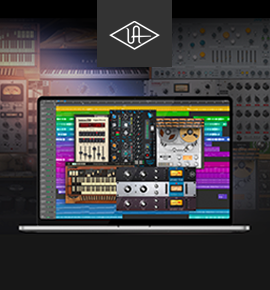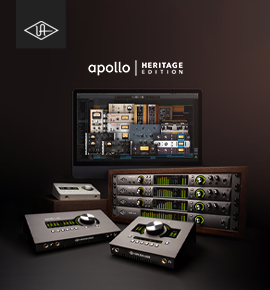System Demo - Scaled Agile Framework
페이지 정보
작성자
Leonel
작성일
본문
Base milestones on objective evaluation of working systems.
-Lean-Agile Principle #5
System Demo
The System Demo offers stakeholders an built-in view of recent options for the most recent iteration delivered by all the groups on the Art. Each demo gives an goal measure of progress and the chance to offer feedback.
A system demo is a critical occasion. It’s the strategy for assessing the Solution’s present state and gathering fast, Agile Release Train-stage feedback from the people doing the work and demanding feedback from Business Owners, sponsors, stakeholders, and Customers. The demo is the one goal measure of worth, velocity, and progress of the absolutely built-in work across all of the groups.
Planning for and presenting a helpful system demo requires work and preparation by the teams. But it’s the one solution to get the fast suggestions needed to construct the right solution.
Details
The system demo exams and evaluates the entire solution in a manufacturing-like context (often a staging setting) to obtain suggestions from stakeholders. These stakeholders include Business Owners, executive sponsors, different Agile Teams, development administration, and customers (and their proxies) who present input on the fitness for function for the solution underneath development. The feedback is important, as only they will guide the Art to remain on track or make changes.
The system demo happens at the end of every Iteration. It provides an built-in, complete view of the new Features delivered by the Art over the past iteration. The system demo affords the Art a fact-based mostly measure of current, system-degree progress inside the PI. It’s the true measure of Art velocity and progress. Achieving this requires implementing the scalable engineering practices necessary to help Continuous Integration throughout the Art.
At the tip of each PI, the Art holds a last PI system demo that reveals all of the features developed over the past PI. Since its scope is larger, the viewers may be broader and include customers, Portfolio representatives, and different extra stakeholders. This demo is often a part of the Inspect and Adapt (I&A) event, which feeds into the retrospective and varied PI progress metrics, including the ‘ART Predictability Measure’ (see Measure and Grow).
In giant Solution Trains, the system demo feeds into the answer Demo.
The Timing of the System Demo
The system demo takes place as near the end of the iteration as doable-ideally, the following day. While that's the aim, some complications could make that timing impractical. Immature continuous integration and Built-in Quality practices can delay the ART’s capacity to integrate ceaselessly. Also, each new increment might require extensions to the demo surroundings, including new interfaces, third-celebration parts, simulation instruments, and different environmental assets. While the System Team strives to offer the proper demo surroundings at the tip of every iteration, the integration may lag.
The system demo must occur within the time bounds of the next iteration. ARTs must make all the necessary investments to allow the system demo to happen in a well timed cadence. A lagging system demo is commonly an indicator of larger problems throughout the Art, such as steady integration maturity or System Team capability.
Balancing Integration Effort and Feedback
The goal of the system demo is to learn from the most recent development expertise and adjust the course of action. However, due to costs or availability, some elements don’t lend themselves to continuous integration - hardware, mechanical methods, provider-supplied parts, and scarce components. Continuous integration might not be economical or sensible in such environments.
However, deferred integration, or none in any respect, is far worse. It significantly inhibits learning and creates a false sense of safety and velocity. Therefore, if this isn't practical, it’s vital to find the proper steadiness and continuously improve integration and testing automation to lower the cost of future integrations. Figure 2 exhibits a ‘u-curve’ value optimization for integration efforts.
When full integration at every iteration is too costly, the teams ought to consider the following:
- Using Test Doubles to speed integration and testing by substituting sluggish or costly components with faster, cheaper proxies- Integrating a subset of Capabilities, elements, or subsystems- Integrating for example a selected function, functionality, or Nonfunctional Requirement (NFR)- Partial integration with the support of prototypes and mock-ups instead of scarce or expensive components- Less frequent integration (for example, every other iteration) till it’s feasible to do it extra typically
It’s also vital to do not forget that steady integration represents a natural problem for groups still transitioning to Lean and Agile strategies. That’s regular and shouldn't be an excuse to reduce the scope or extent of integration. Most of the challenges ought to disappear because the Art matures.
Continuous integration validated by the system demo contributes to the flexibility of the enterprise to attain faster time-to-market through a more steady movement of value to its prospects as outlined within the Agile Product Delivery competency.
System Demo Attendees
Attendees typically embrace:
Product Managers and Product Owners, who're normally accountable for working the demo- A number of members of the System Team, who typically assist set up the demo within the staging surroundings- Business Owners, executive sponsors, clients, and customer proxiesSystem Architect, IT operations, and different growth members- Art Agile crew members attend each time possible
Event Agenda
Having a set agenda and fixed timebox helps decrease the transaction prices of the system demo. A pattern agenda follows:
- Briefly overview the enterprise context and the PI Objectives- Briefly describe every new feature earlier than demoing- Demo each new function in an end-to-finish use case- Identify present risks and impediments- Open dialogue of questions and suggestions- Wrap up by summarizing progress, suggestions, and motion objects
Guidelines
Listed here are a few tips for a profitable demo:
- Timebox the demo to no multiple hour. A short timebox is crucial to maintain key stakeholders’ continuous, biweekly involvement. It additionally illustrates group professionalism and system readiness.- Share demo duties among the team leads, Product Owners, and even team members who've new features to demo- Demo from the staging environment- Minimize demo preparation. Demo the working, tested capabilities, not slideware.- Minimize demo presentation time.
If you loved this information and you would like to receive details about jogo goal cassino generously visit the web-page.
관련자료
-
이전
-
다음
등록된 댓글이 없습니다.




